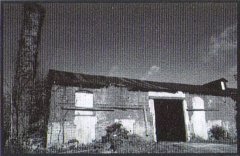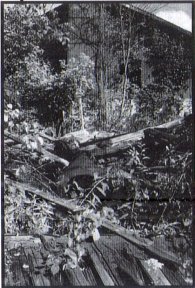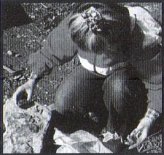Storyteller Insulators
By Lynda Katonak
Reprinted from "Crown Jewels of the Wire", January 2005, page 22
Over the last thirteen years, insulators have been my husband's hobby, not
mine. BUT I LOVE THE HUNT!! We've hunted insulators while climbing mountains,
crossing deserts and in the midst of flash floods, reaching hunt areas on
cross-country skis, sometimes digging holes or climbing trees, and walking along
untold miles of railroad tracks.
Although we sometimes do make some real insulator finds, of more value than
the worth of the insulators are the other treasures: sightings of rare birds to
add to my life list, petroglyphs not found in guidebooks, beautiful mineral
specimens, spectacular double rainbows after a rainstorm, unforgettable sunsets,
and the companionship of my husband and our insulator friends.
The insulators I find are not M, or VNM, or even NM!! In fact they are
frequently worthless shards of glass! But they are not worthless to me - because
these are my "STORYTELLER PIECES." These are the insulators which tell
many stories - the story of the historical line that once ran through the area,
the story of the insulator itself (its company of manufacture, its shape and
color) and the story of the wonderful days and experiences on the hunt!!
THE PUEBLO STORYTELLER
In the Native American community, oral tradition has long been the method of
transferring the knowledge of one generation to the next. The time honored
Indian Pueblo pottery tradition of working with clay and telling stories has
merged into a modern art form of "STORY-TELLER" pottery dolls.
The art of making clay effigies is as ancient as the Anasazi peoples who
inhabited the deserts of New Mexico many centuries ago. In recent history, it is
the Cochiti pueblo potters who are known for clay effigies depicting many
different aspects of their everyday life. Yet, it was not until 1964 that Helen
Cordero of Cochiti pueblo created her first "storyteller" figure.
Cordero's Storyteller model was her grandfather who gathered his grandchildren
around him to play the drum, sing them songs and tell stories of their Indian
heritage and traditions.

notice the insulators the children are holding
Ohio Valley Glass Company Pleasant City, Ohio
Ohio is our home state; both Tom and I were born, raised, educated and
married in Ohio. So when Tom began collecting insulators, we became interested
in learning more about insulators made in the state of Ohio. We read everything
we could find and traded information with other researchers. The more we
learned, the more fascinating the story became. The Ohio Valley Glass Company
existed on paper only from August 16, 1902 to April 1905 on a site near Pleasant
City, Ohio and only produced glass for less than a year and a half during that
time.

We wondered...could we find the site? On our next trip home to Ohio in
September 1993, we stopped in Pleasant City, a very small town in the
southeastern part of the state. We walked the few streets and talked to several
old timers in town. Their memories of the glass factory were very vague or
non-existent, but they knew where the railroad used to run, and we knew from the
Sanford Insurance maps we had found in our research that the factory was
adjacent to the railroad. We explored along the abandoned railroad right-of-way
till we found an old deserted brick building with a faded "UNITED STATES
FOOD COMPANY" printed across the top.

We searched the interior of the building as well as through the surrounding
jungle of weeds searching for some evidence that this was the actual site of
Ohio Valley Glass Company when we noticed shards of aqua glass mixed in the
dirt. After much searching we found a few pieces that had part or all of the
"O.V.G." embossing that we were looking for. We also found large
discarded chunks of glass with marbles imbedded inside. . Not much to add to an
insulator collection, but "STORYTELLER" pieces for sure!

In 2000 we returned to the site and discovered that the old building's roof
had collapsed beneath a winter's heavy snowfall. The whole building had been
bulldozed and hauled away. Little remains now except a few fire bricks to show
that Ohio Valley Glass Company ever stood on the spot.
| 